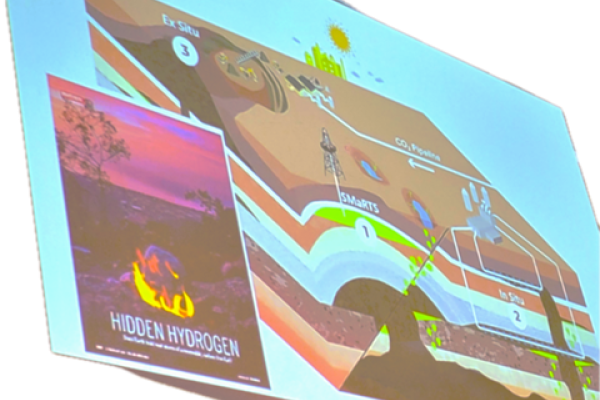Unearthing Energy Solutions: Insight into Geologic Hydrogen's Potential

Last month, at the Byrd Polar and Climate Research Center's 5th Annual Symposium on Climate Change Research, the Director of the Global Water Institute at The Ohio State University and Professor at the School of Earth Sciences (SES), Dr. Tom Darrah, presented "Hidden Hydrogen: the Potential for Geologic Hydrogen." The session highlighted the emerging significance of geologic hydrogen as a sustainable energy source, addressing the long-standing challenge of decarbonizing industries that are hard to reform, such as heavy hauling and steel manufacturing.
Dr. Darrah emphasized the limitations of current hydrogen production methods, like steam methane reforming and electrolysis, which are hindered by high carbon emissions and cost inefficiencies. However, he introduced the concept of geologic hydrogen – a naturally occurring resource known for years but only recently considered as a viable energy source. This breakthrough came from the Bourakébougou field in West Africa, where an accidental discovery led to the utilization of hydrogen for power. An article published earlier this year in the journal Science titled "Hidden Hydrogen- Does Earth hold vast stores of a renewable, carbon-free fuel?" posed this question about the vast resource that has yet to realize its full potential.
The talk addressed various aspects of hydrogen use, including its potential in synthetic fuel production and the role of federal and private investments in advancing research and development. Dr. Darrah explained the serpentinization process, where water-rock interactions generate hydrogen, a method gaining traction due to its low carbon footprint and cost-effectiveness.
Moreover, he discussed his continued work in his lab, collaborations with his SES colleagues, innovative approaches like geomimicry to stimulate hydrogen production and the use of existing exploration technologies. He highlighted the promising prospects of hydrogen as an economical and low-environmental-impact energy source, potentially revolutionizing the energy sector.
The session concluded with a call to leverage existing technologies and infrastructures to harness this sustainable energy source, underscoring the flourishing interest and investment in geologic hydrogen research and its potential to impact future energy markets significantly.
